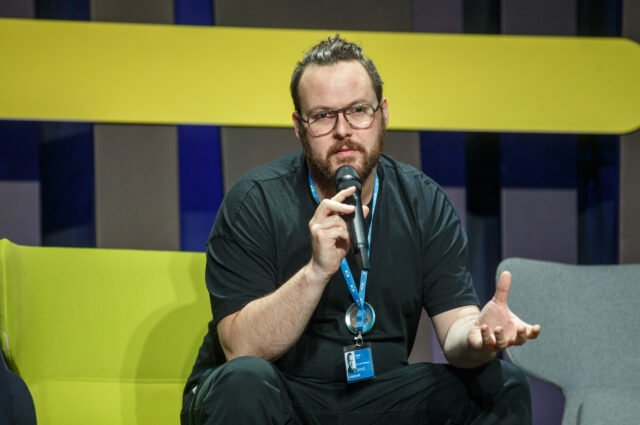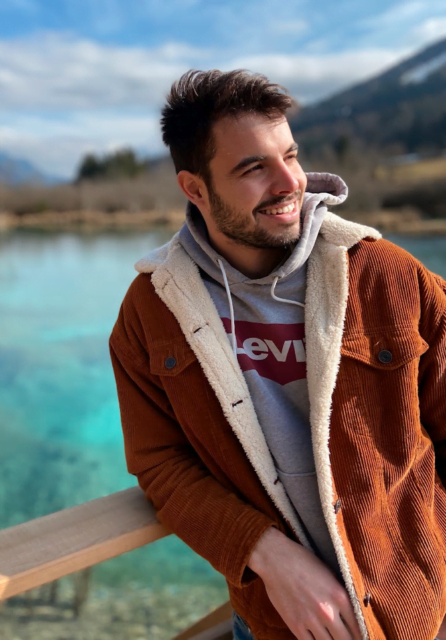Illustrative image
How can we make sure we truly share the decision-making power with young people? We invited the SALTO Participation and Information Resource Centre (SALTO PI) team members to discuss how to do youth participation better, what useful resources to use and what mistakes to avoid.
Kelly Hrupa, Joana Freitas, Kadri Maripuu and Brigita Medne are Coordinators at SALTO PI, working to foster youth participation across Europe, especially within the Erasmus+ and the European Solidarity Corps programmes. Established in 2018 by the European Commission and hosted by the Estonian National Agency, within five years they have involved a significant number of experts and trainers to develop knowledge on youth participation. So, what are the mistakes most commonly seen in the bad practice of youth participation? How does SALTO PI support youth workers and organisations in raising the quality of youth participation?
Why do we need to talk about Youth Participation?
The SALTO PI coordinators agree that the term “youth participation” is still something that is not commonly understood, and this is a problem.
“In terms of youth participation, SALTO PI’s role is to give our contribution towards promoting democracy as such. We might take democracy for granted, but looking at history we can see that we shouldn’t. Our work is to help to ensure that democracy is in good health,” explains Kelly Hrupa.
“However, in some countries and for some educators and youth workers, words like “democracy” and “participation” appear overly political. They don’t always feel comfortable addressing these topics,” adds Joana Freitas.
“Indeed, we shouldn’t forget that the language aspect is still essential. The field of meaning can be quite wide, even opposing. It’s important to formulate and explain what is meant when we talk about youth participation. If we don’t have the language to discuss this or understand it, then it’s hard to take any positive action,” adds Hrupa.
So, what does youth participation mean?
Briefly summarised, based on the resources in the Participation Resource Pool, youth participation is a process where young people, as active citizens, take part in, express views on, and have decision-making power about the issues that affect them (Farthing, 2012). Young people’s participation takes place in multiple spheres and at multiple levels. This can be at the individual and local level (such as interpersonal, family, and schooling) but also at the regional, national and international arenas. Most importantly, participation is about power-sharing and the distribution of power from and between those who typically control the process (adults) to those they seek to engage (young people).
Creating space and avoiding tokenism
According to Brigita Medne, one of the traps adults often fall into is tokenism. Tokenism is considered to be a practice or process where young people appear to be given a voice, but in fact have little or no choice about what they do or how they participate.
She also admits that willingly or not, youth participation ends up being tokenistic too often. “It’s when young people appear on project evaluation boards, pictures or newsletters, but they often don’t know what they’re involved in or if their participation changes anything.” In sharing bad examples she emphasises that it’s important to design youth-friendly spaces. So, what makes a good space for youth participation?
Brigita’s colleague Kadri Maripuu believes it’s about trusting young people’s judgement. “It’s important to involve young people from the start of these processes. The best way to create a safe space for young people is to ask them which space is best for them. This applies to both physical and digital spaces,” she considers.
“Yes, a common mistake I see is focusing on youth participation in a very formal way. We create councils and strategies, but we lack honest engagement. Creating formal structures is not enough. We have to be authentic,” believes Medne.
Of course, leaving out young people’s interest is not always deliberate. Very often, it’s because of the lack of awareness. This is exactly what SALTO PI works on – to develop and promote quality knowledge on youth participation for those who work with young people.
Resources for those who want to foster youth participation
Here are six resources and activities coordinated by SALTO PI that should be noted down by anyone who works to improve young people’s participation:
- Participation Resource Pool – over 700 useful resources (e.g. articles, guidelines, videos and research summaries) on topics of youth participation, promotion and outreach, digital transformation and media and information literacy created for the youth work community.
- Youth Participation Strategy – Providing strategic vision on how to improve the quality of youth participation in the EU Youth Programmes keeping National Agencies and bigger organisations in mind.
- Youth Participation Toolkit – Supporting the strategy, this is a 12-module practical toolkit offering ideas and guidance on how to improve youth participation in all types of actions in the EU Youth Programmes.
- Projects Collection – A collection of quality youth participation projects invaluable for anyone who plans, implements, or supports projects carried out through EU Youth Programmes.
- SALTO Awards – An annual celebration of outstanding youth-led and youth work projects in the priority fields of the EU Youth Programmes.
- Training and networking events to strengthen cooperation. Follow the SALTO Training Calendar to keep an eye on upcoming events by SALTO PI. NB! The calendar also includes events coordinated by other organisations and other SALTOs.
Comments:
Dan Moxon, Youth Participation Expert

Youth participation and youth information are complex topics. SALTO PI helps everyone in the field have a similar understanding by providing training, resources, strategies and support. It is invaluable that they work closely with youth workers and youth leaders as well as with National Agencies. One of the useful things about SALTO PI is they provide everything that a youth worker needs to get to grips with youth participation for the first time.
Tine Šteger, Youth activist. Member of the Co-Steering Group of the Youth Participation Strategy

I think it’s essential to keep the EU Youth Programmes as close to the end target group as possible. Apparently, SALTO PI noticed this challenge and took steps to improve things by developing the Youth Participation Strategy. There is still a lot of work to be done to reach young people in rural areas for example. To solve such challenges, you have to take a strategic approach. Here, the National Agencies and NGOs have a huge role to play – to ensure open, transparent and youth-friendly communication and offer a quality experience. The strategy helps National Agencies and organisations to steer their work better.
This article was originally written for the 2023 issue of Mladje magazine.
Mladje is a Slovenian youth field magazine issued by Movit (Institute for the development of youth mobility, and the Slovenian national agency for Erasmus+ and European Solidarity Corps).





